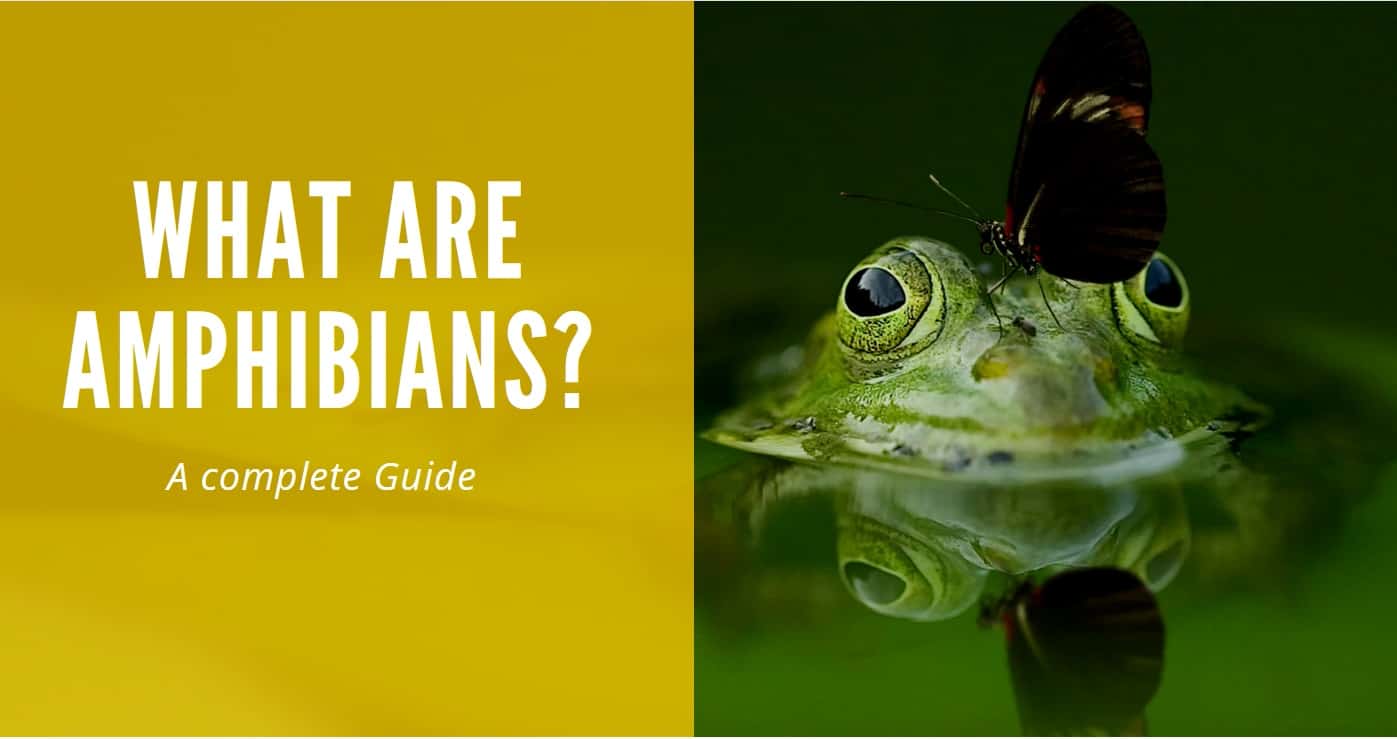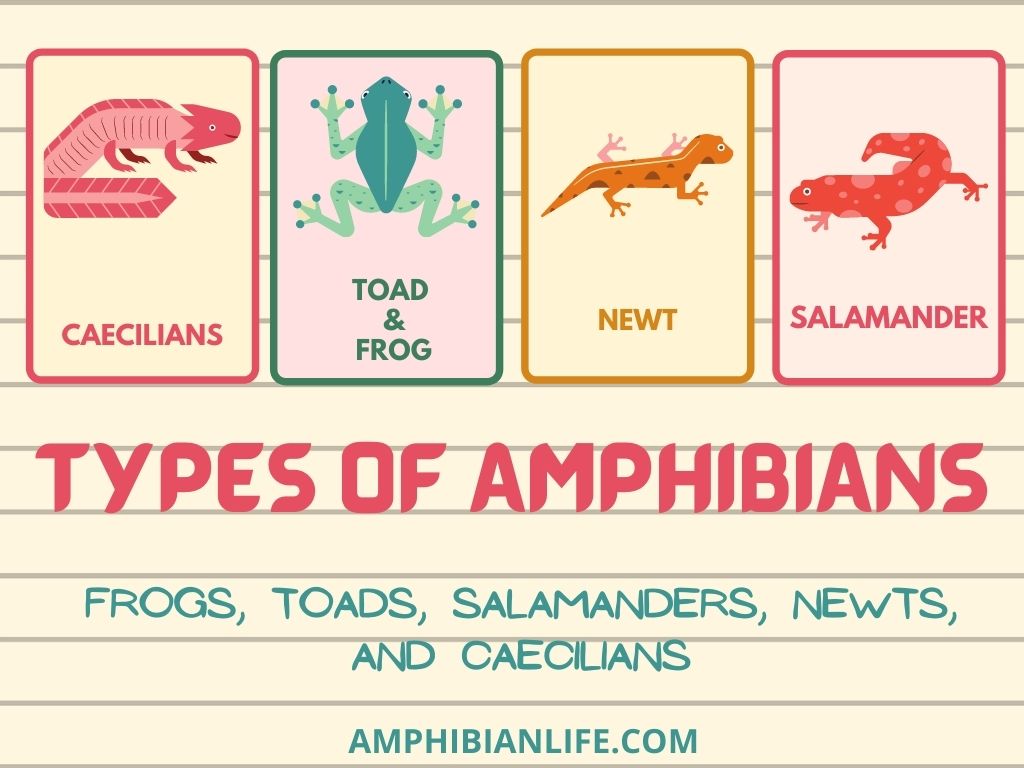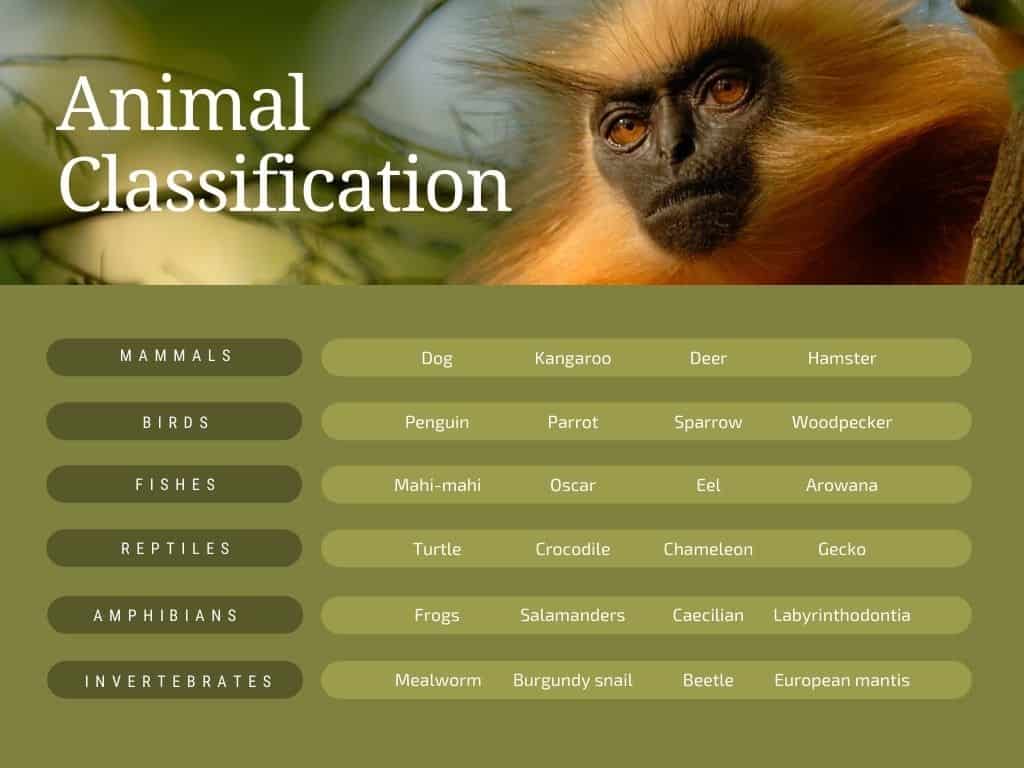
Amphibian Life is here to share interesting facts and information about amphibians. But first, we need to understand what an amphibian actually is. Are we talking about frogs? Snakes? Reptiles? Fish? What are amphibians really? And what makes them different from other animals?
What does the name amphibian mean?
In this article, we define “amphibian”, we look at the characteristics of amphibians, and we share examples of amphibian creatures.
Does amphibian mean double life?
Yes, Amphibians as the name suggested is derived from the word Amphibia meaning “life”.
The amphibian word comes from the Greek word Amphibios, which means “to live a double life.
Amphi meaning (both) + bios meaning (life) Creatures ‘living both in water and on land,
Their unique ability to live both on land and in water makes them interesting pets.
Amphibian definition
Amphibians are cold-blooded, vertebrate animals that have an aquatic phase of life (spent in water, breathing through gills) and a terrestrial phase of life (living on land, breathing with lungs).
- Cold-blooded means that an amphibian can’t generate its own body heat. Instead, their temperature varies with the temperature of the surrounding environment.
- Vertebrate means that amphibians are a type of animal with a backbone or spine.
- Aquatic means in water. Amphibians begin their life living underwater, breathing through gills and swimming with tails.
- Terrestrial means on land. At a later stage of life, amphibians develop lungs and legs and move out of the water to live on land.
Probably the best-known example of an amphibian is the frog. You probably know that frogs begin life as tadpoles: little fish-like creatures that breathe through gills and swim around with small tails.
You’ll also know that frogs don’t stay tadpoles forever. They develop legs and eventually hop onto dry land, where they breathe through their lungs as we do.
Characteristics of Amphibians
Clearly, how amphibians look varies depending on the stage of their life.
A tadpole looks completely different from a frog, for example.
But there are some characteristics that are generally consistent across most amphibian species.
- Amphibians have moist bodies. If you picked up a snake (which is not an amphibian) it would feel very dry. Contrary to popular belief, snakes aren’t “slimy”. However, if you picked up an amphibian – such as a frog – its skin would feel wet and slippery.
- Amphibians don’t have scales. Taking the snake example again, if you looked closely at a snakes body, you’d see lots of tiny plates, called scales. Scales are what fish and reptiles have instead of skin. They don’t have scales, they have smooth skin.
- Amphibians will die if their body dries out. The reason they have moist bodies and smooth skin is that they need it to survive. Amphibians have a special skin that is able to absorb water and oxygen, stopping them from getting dehydrated. This is why, even once they start living on land, amphibians usually live close to water.
- Some amphibians can “aestivate“. This is a special ability that allows certain types of amphibian to enter a dormant state if conditions become too hot and dry. They then return to normal once cooler, wet conditions return.
- Some amphibians are poisonous. Poisonous amphibians release toxic chemicals through their skin to harm and scare away predators.
How many Amphibians species are there?
We often have people ask us to publish a list of all amphibians.
We could… but it would be very long! There are over 8000 amphibian species.

Amphibian Examples and Categories:
Broadly Amphibians fall into the following 4 categories:
- Anura or Salientia – Frogs and Toads
- Urodela or Caudata– Salamanders and Newts, mudpuppies etc
- Gymnophiona –Caecilians (The less well-known) limbless blind serpentine amphibians
- Labyrinthodontia (extinct amphibian subclass)
Frogs and Toads have long back legs, short front legs, webbed feet, no tails, and large eyes.
You may not know that the difference between a frog and a toad is that frogs have smooth skin, whereas toads have warty skin!
Salamanders are a group that shares the characteristics of a long body, a tail, and short limbs.
Newts are a type of salamander in the subfamily Pleurodelinae unlike Salamandridae they are semi-aquatic in nature.
Caecilians are fascinating creatures that many people have never even heard of! They look like snakes or worms, have no legs, and live in rivers and streams, where they burrow into the riverbed.
Labyrinthodontia Belong to the super-order of Amphibia comprising extinct ones of the Upper Paleozoic, Devonian, Mesozoic eras.
They are termed as maze toothed in Greek and are evolved from vertebrate fishes with fins.
Remember: Frogs and toads, salamanders, and caecilians are groups of amphibians. Within these groups, there are many different species.
For example, you may already know of different types of frogs. There isn’t just one generic “frog”. There are frogs of all different shapes and sizes.
Amphibians vs Reptiles
Because they look kind of similar, people are often confused about the difference between them.
Let’s clear up the confusion…
- Reptiles are scaly creatures, with dry bodies, that live on land.
- They breathe through their lungs and don’t have gills.
- They lay eggs on land and the eggs have hard shells.
As we’ve already learned, amphibians are very different from reptiles.
- They have smooth skin (no scales) and moist bodies.
- Amphibians live underwater and breathe through gills at one stage of their life, and live on land breathing through lungs at a later stage.
- They lay eggs in water, not on land, and their eggs are soft, with no hard shell.

Are Turtles Amphibians?
One of the most common questions we get asked is whether turtles are reptiles or amphibians.
It makes sense that there’s some confusion, as turtles do spend some of their time in water and some time out of water.
They’re also cold-blooded, like amphibians. But turtles are actually reptiles
There are a few key differences:
turtles have scales and a shell, where frogs and toads don’t, and turtles lay eggs on land, not in water.
Is Alligator or crocodile an amphibian?
Crocodiles have a lot of similarities but they are not termed amphibians, as they cannot breathe through their skin In fact they are part of the reptile family.
Reptiles: lizards, Snakes, turtles, tortoises, crocodiles, alligators are reptiles.
Amphibians: Frogs, toads, salamanders, newts, and caecilians
For further Reading
I hope this article is a great learning experience for all you pet enthusiasts. and cleared many misconceptions about them.
There are more interesting topics about frogs, toads, salamanders, and newts you may like to read
